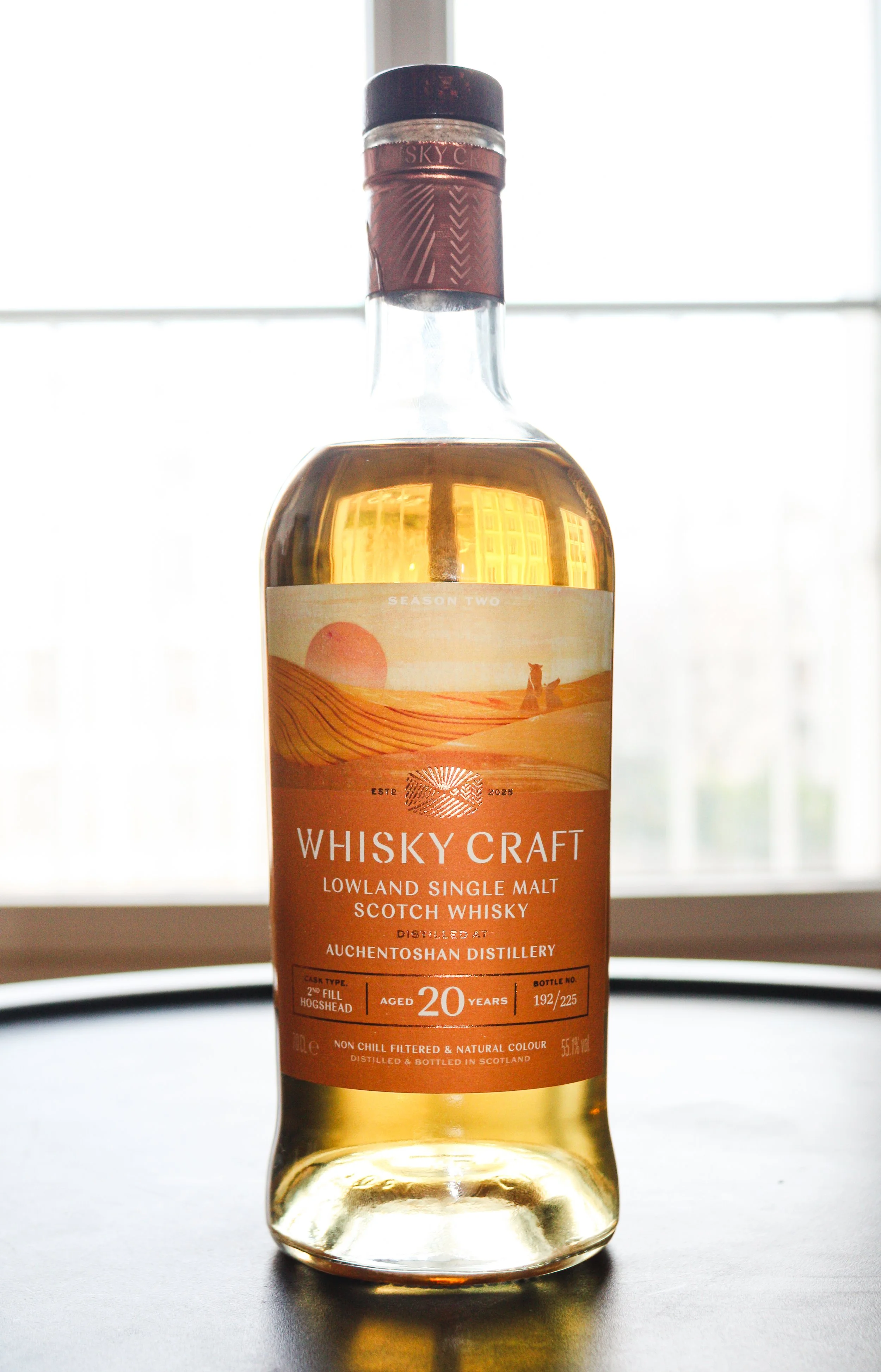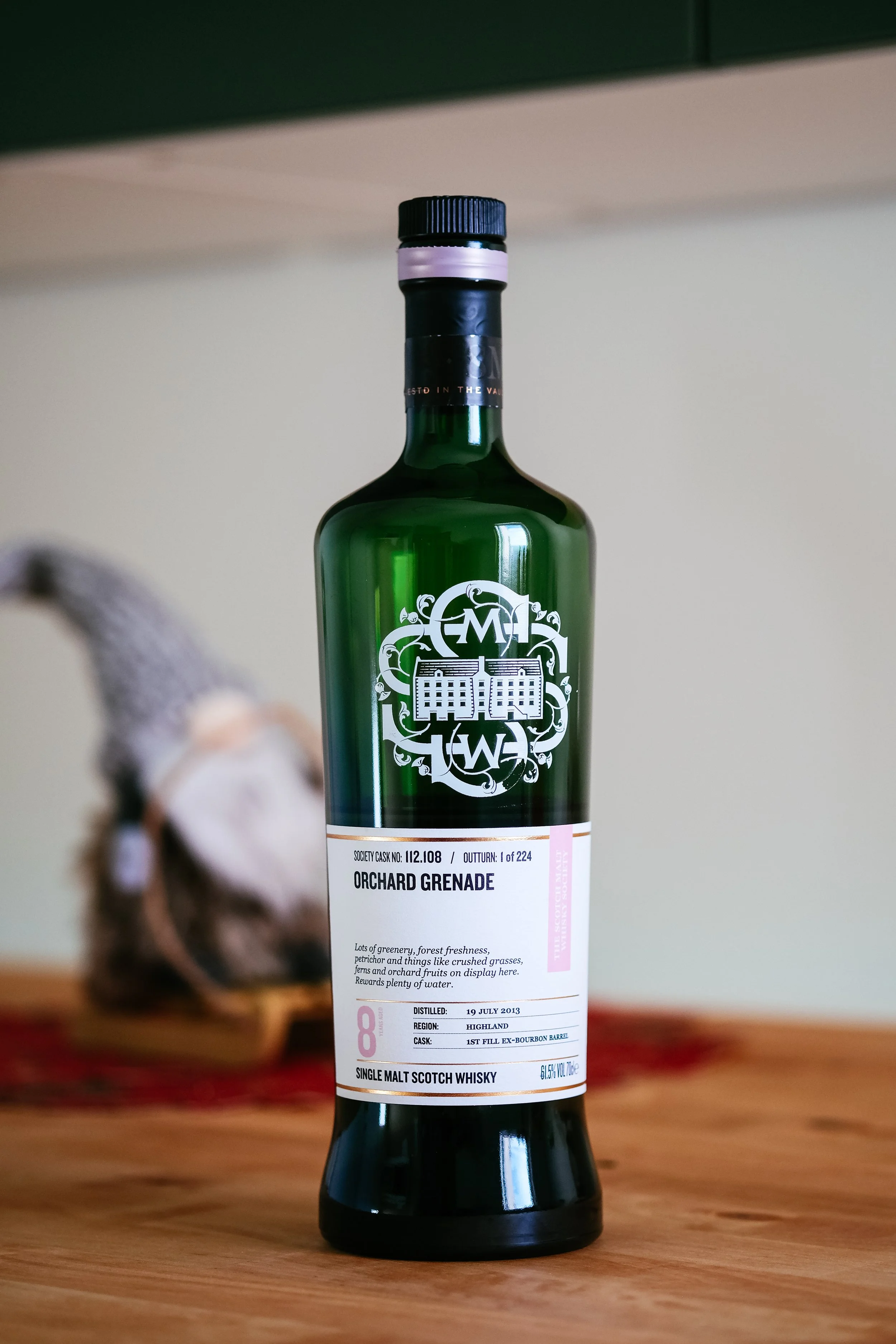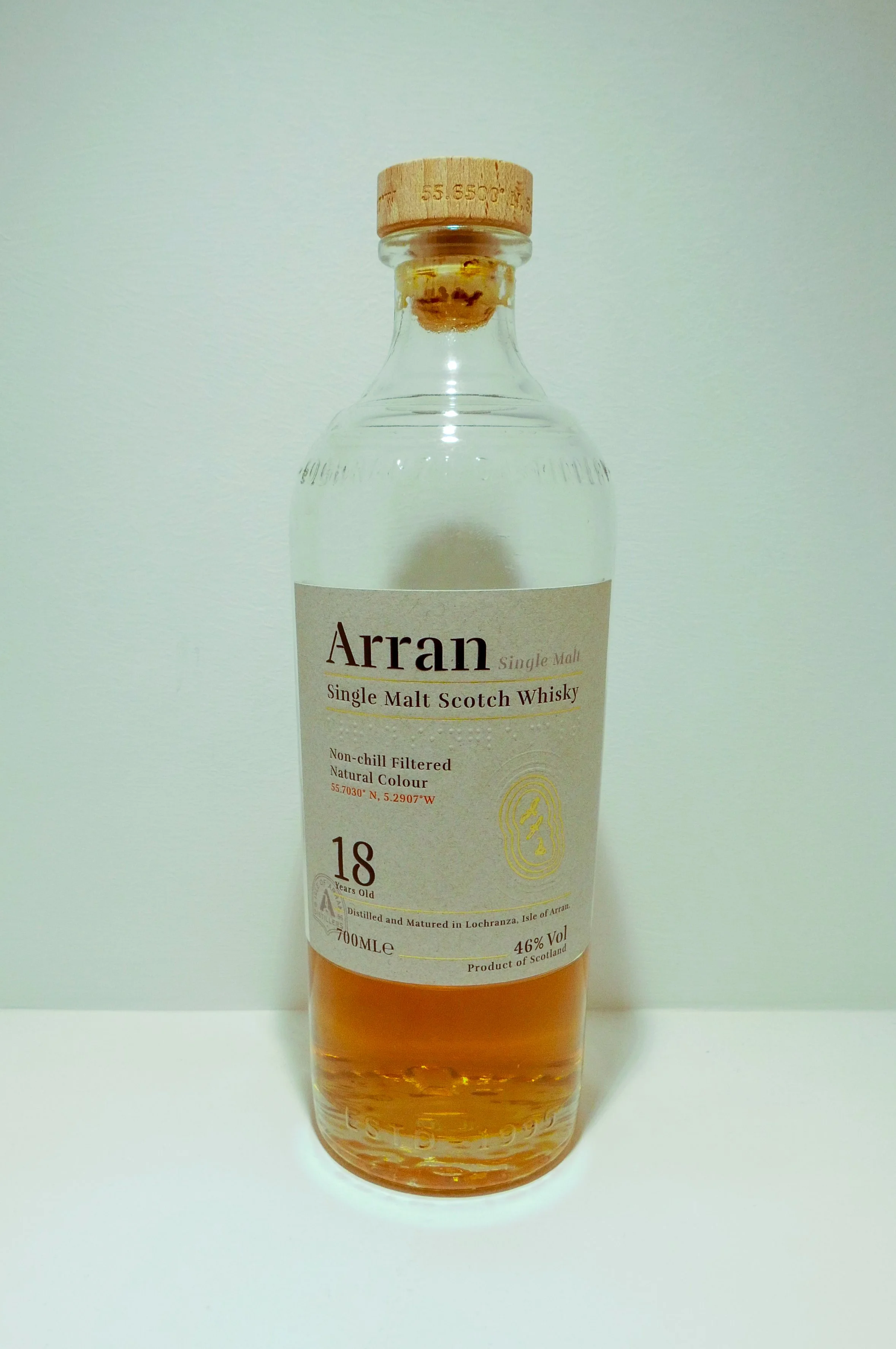Lagavulin Distiller’s Edition
Official Bottling, 2001 Vintage | 43% ABV
Score: 5/10
Average. In a good way.
TL;DR
A gentle-handed introduction to smokey whiskies
How’s your weather?
For those who live in tropical climates, how we perceive the seasons is very different from those who live closer to the poles.
Take Scotland for example, the place where the whiskies we love are distilled and matured. Its cool, humid climate is great for whisky, but I often hear sentiments from Scots longing for the months of summer, looking for a bit more sunlight and a bit more warmth.
Some in Hong Kong look forward to the summer mostly because that’s when watersports are most enjoyable, but I think I speak for most of my fellow compatriots when I say that we generally don’t look forward to the summer. In the grand scheme of things, Hong Kong is not that hot in the summer, with a typical summer day hovering around 28-32 °C; however, the real issue is the humidity.
With relative humidity constantly hovering around and above 80%, sometimes it can feel unbearable standing just minutes outdoors in the sun. Probably making matters worse are the city’s dense high-rise buildings, trapping air between them and preventing air flow, and stifling any build-up of wind; and to add an extra nail in the coffin, in order to make their tenants comfortable inside these buildings, air conditioning is cranked right up, in the process pumping out more hot air into the ambient surroundings, creating a vicious cycle.
Adding to the misery, the summer months are also when rainfall figures are the highest, which means when it’s not scorching hot, it can be pouring. So, pick your poison; be soaked in sweat or be soaked in rain, neither is pleasant.
So when folk talk about seasonal whiskies, I can’t quite relate, or at the very least, I perceive it very differently. I can obviously tell the big buckets of flavour profiles, tropical whiskies like Compass Box’s Orchard House, sherry bombs like the 15 year old Glenallachie, or peaty beasts like the Port Charlotte 10, these profiles are all brought up when seasonal whiskies are discussed, but let me explain why I don’t relate at all.
Because of the unpleasant summer, and the economic prosperity of Hong Kong, most of us enjoy our down times in air conditioned environments. For almost half a year, we find ourselves surrounded by artificially cooled air, so the difference in the temperature we experience in summer and winter is mostly down to whether our surroundings are air-conditioned or not. I can safely assume that 95% of my whisky consumption occurs in places where the temperature is between 20 to 25°C.
In fact, as you are reading this, a serious typhoon has come and gone, while I still sip my whiskies in the comfort of a controlled environment. Let the pictures bring you back to debris two days after the typhoon, credit to the city, it’s been pretty efficiently cleaned up compared to the day it hit.
Which is why the seasons don’t dictate my mood in what whiskies I reach for, it is equally likely for me to go for a peated whisky in summer as it is in winter.
Review
Lagavulin Distiller’s Edition, 2001 Vintage, bottled 2017, secondary maturation in Pedro Ximenez casks, 43% ABV
~£99 and still available (various vintages)
Murdo, in 2025, would not actively seek out an official Lagavulin at full price; not to pass judgment on the whisky, but it simply doesn’t represent good value to me anymore. It once had a place on my shelf though, and there will always be a bit of curiosity attached to the brand.
I don’t really talk about whisky much in my work place, there’s still a stigma with spirits that it’s all about getting drunk, and I wouldn’t want my colleagues to think that I’m an alcoholic. Rather than explaining what a wonderful thing whisky is, I prefer to just avoid the topic altogether. But about a year ago a colleague briefly mentioned his liking of whisky, and I’ve been into whisky for long enough to know that when someone say that they like whisky, there are different levels of “like”, and I shouldn’t automatically assume that they are a whisky maniac like me. In fact I should, by default, assume that they simply enjoy the occasional whisky.
My colleague is exactly this type of drinker; middle of the road, casual occasional sipper. Further discussion of our preferences reveals that he’s a big fan of Lagavulin, in particular the 16 year old, in fact he was slightly embarrassed to tell me how many versions of the Distiller’s edition he has in his possession. After easing his guilt by making my own confessions about having too many bottles - of everything - he suggested swapping opened bottles, and I was very keen. I have never tried a distiller’s edition of Lagavulin, and since I was never going to fork out my own money to buy one, it was a nice opportunity to rekindle with Lagavulin. In return he asked me to offer him something more adventurous, so I gave him a bottle of Westward American Single Malt.
Score: 5/10
Average. In a good way.
TL;DR
A gentle-handed introduction to smokey whiskies
Nose
Sour, fruity, gentle smoke; a nice reminder that Lagavulin isn’t all that peaty, but it’s smoky. If I had to pick a fruit it would probably be pomelo. Somewhat related but distinct from the smokiness, there’s a nice coastal brininess on the nose as well.
Palate
Ashy but sweet, in fact this is quite a sweet whisky: an assortment of dried fruits, but the definition isn’t quite there, I can’t pick out the fruits individually, other than maybe dates. A nice fizziness runs through the palate, but the finish is relatively short, and here is where the sort of wet bitterness of the peat is arriving.
The Dregs
If you don’t mind smoky whiskies, this is fine, smooth, rounded, inoffensive, and I can see what Diageo is trying to achieve with this expression, along with the more commonly seen Lagavulin 16yo, it eases you into smoky whisky with a gentle hand, creating an illusion of complexity with the smokiness. The 15-16 years in the cask definitely helped as well and I believe there are more sherry casks in this than the normal 16 year old. It’s good to have a Lagavulin on the shelf again, the experience was like rekindling an old acquaintance, polite, pleasant, but not so engaging that I couldn’t wait for the next time.
Summer whiskies might not mean anything to me, but there is definitely one category of beverages that I drink a lot more during the summer months; carbonated drinks. Our fridge during summer is often stocked with 750ml bottles of sparkling water, and coming home from the scorching heat outside, after turning on the air conditioner, the next thing I do is often open up a bottle of sparkling water and start gulping. 750ml might sound like a lot, but it goes down with consummate ease, there’s just something about carbonated drinks that quenches thirst.
Of course, adding a bit of alcohol doesn’t hurt.
When the Dramface writers discussed adding a bonus cocktail review I thought it was a fun idea and I’d like to take part, the problem is that I have neither the experience nor the materials to make a cocktail, so while I said I’m up for it, I wasn’t sure if I could deliver. Until Wally asked if anyone would like to do a Lagavulin in Coke for a Smoky Cokey, I immediately called dibs, sounds like the easiest job ever.
But before I mix my Smokey Cokey, let me caveat by saying that for the past several years I’ve tried to eliminate as much sugar as I can in my diet, especially from drinks, so for the most part I’ve drunk more sugarless versions of Coca Cola - coming back to “normal” Coke would take some getting used to.
I think it was Dave Broom who tested many combinations of whiskies with common sodas and found that adding Lagavulin 16 to Coke is his favourite. I do have a strong preference for Coca Cola as opposed to alternatives like Pepsi, but there is something inherently inconvenient when adding anything to Coca Cola - it dilutes the fizz, and that’s important to me. That’s why I enjoy carbonated drinks in the first place, but it needs to be very fizzy. Once it goes flat, I don’t like it anymore.
I tried to find a perfect ratio of whisky to coke, which is generally Jack Daniel’s with Coca Cola. Commonly it comes down to 1 part whisky to 2-3 parts Coca Cola, which I thought was probably too much, because the whisky would flatten the fizz, while the Coca Cola would smother the whisky. But if I’m cynical I’d guess that’s the ratio that bars might serve it at to get people drunk faster. Instead, I mixed 60ml of Lagavulin with a can of 330ml Coca Cola.
I didn’t like it, it’s the worst of both worlds. It’s a sweet, gloopy mess of semi-flat Coca Cola with an annoying lick of alcohol being more of a distraction. Sure, there was a bit of smokiness, but as I wasn’t so used to the sweetness of the Coca Cola itself, I found the lingering sweetness to be almost unbearable.
I wasn’t about to just give up though, I think the ratios simply weren’t quite to my liking. I decided to dial down the whisky to retain more of the fizz, trusting that the smokiness would still shine through. Reducing the whisky to just 30ml in a 330ml serving of Coca Cola was much better, the Lagavulin was now a seasoning component, retaining the much-needed fizz from the drink. Interestingly, the smokiness didn’t feel much weaker than the first iteration, it’s much more complementary to the flavours of Coca Cola.
If I were to choose though, I’d still prefer it neat. The Coke that is. As for the whisky, it goes without saying.
Still, it was worth a try.
Score: 5/10
Tried this? Share your thoughts in the comments below. MMc
-
Dramface is free.
Its fierce independence and community-focused content is funded by that same community. We don’t do ads, sponsorships or paid-for content. If you like what we do you can support us by becoming a Dramface member for the price of a magazine.
However, if you’ve found a particular article valuable, you also have the option to make a direct donation to the writer, here: buy me a dram - you’d make their day. Thank you.
For more on Dramface and our funding read our about page here.





































